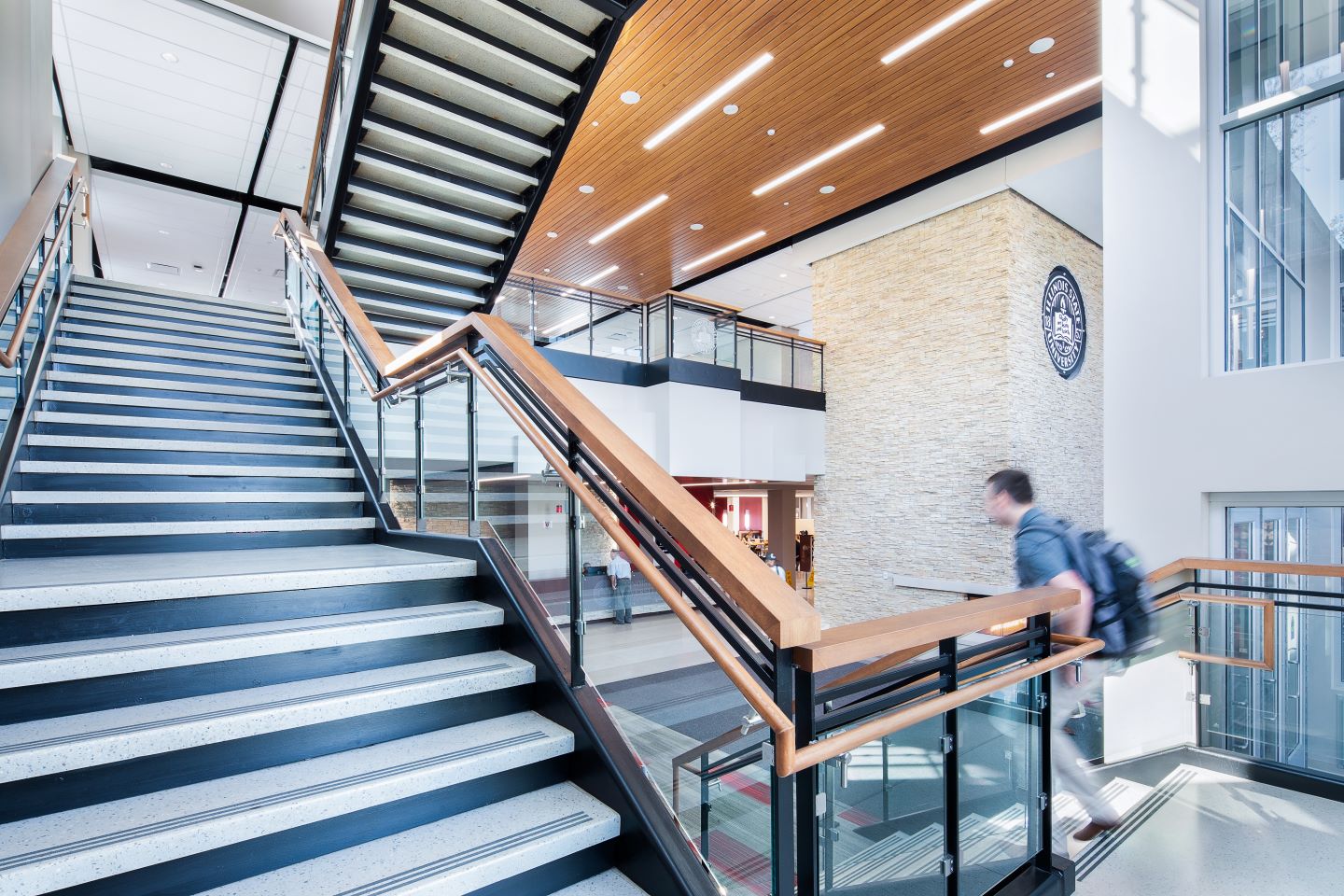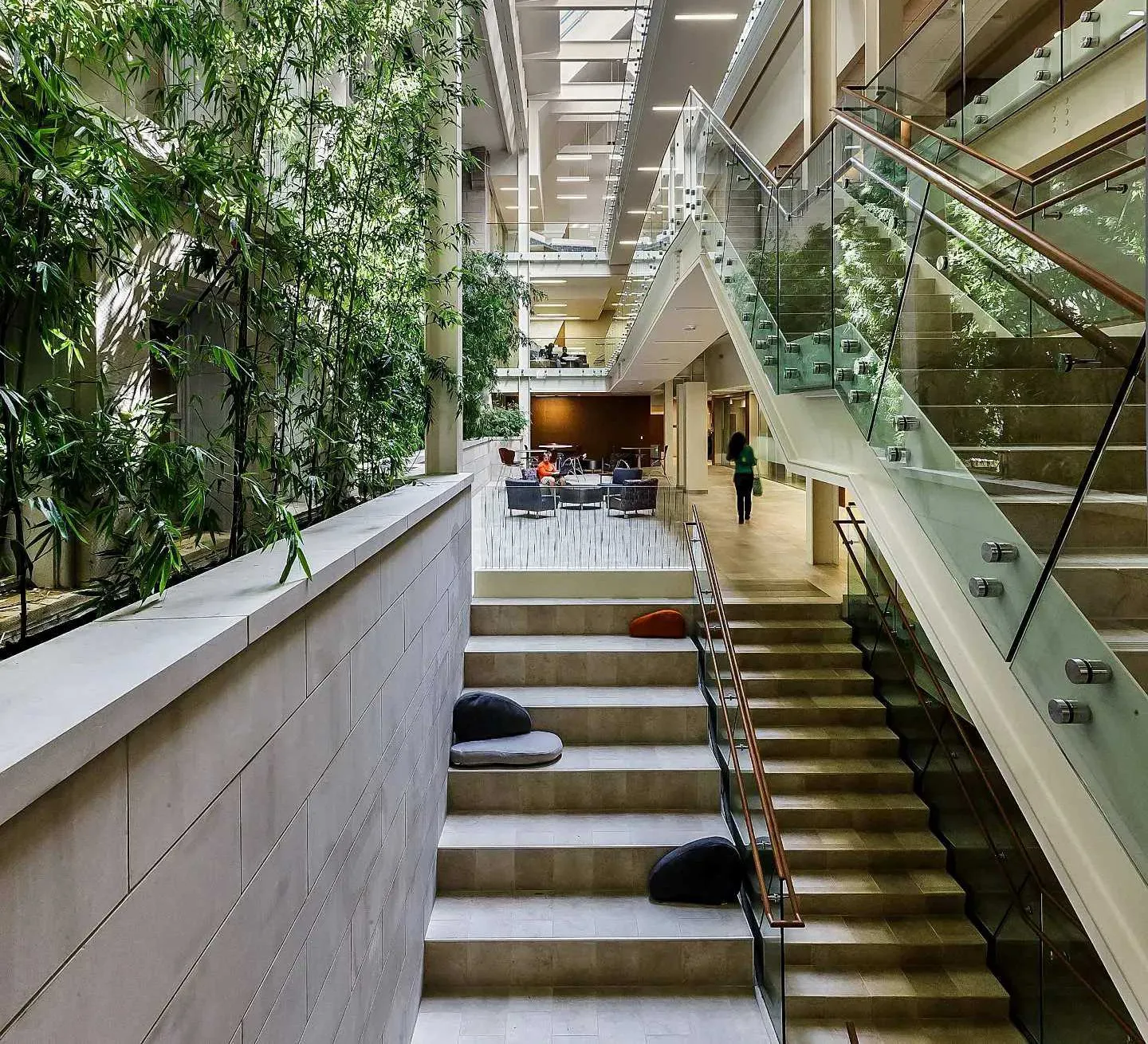Sedentary behaviors and physical inactivity have been clearly established as major contributing factors to obesity and other chronic diseases such as type II diabetes, heart disease, and depression. Globally, an adult spends on average up to nine hours per day sitting. The WELL Movement Concept aims to combat sedentary behavior by introducing opportunities to engage in physical activity within the spaces we regularly occupy throughout the day. Important features of the WELL Movement Concept standard include:
- Circulation networks, which play a critical role in connecting building occupants and the variety of departments and functions contained within. Most often, the common path is the shortest, easiest, and most direct. But, what if we had the ability to encourage building occupants to climb the stairs and meet those step goals? Data collected from a number of public facilities worldwide shows that incorporating stairway enhancements and point of use signage is effective in increasing stair use by occupants.
- Physical activity spaces and equipment, which can be incorporated indoors or outdoors to give regular building occupants opportunities for exercise, such as walking, swimming, yoga, or play. Introduction of active spaces within the workplace provides a more convenient solution for employees to increase physical activity. In many cases, it provides an option that may not otherwise be available outside of the workplace.
- Facilities for active occupants, which encourage more regular building users to engage in a higher level of physical activity during the day, such as walking or biking to work, exercising over lunch breaks, or taking part in a fitness routine prior to returning home in the evening. Studies have shown that by planning for no-cost bike parking, incorporating staff locker space, and/or integrating shower facilities, staff activity rates show documented increases.
 Illinois State University Bone Student Center’s grand stairway is adjacent to the entry pavilion which aligns with pedestrian access to the main quad.
Illinois State University Bone Student Center’s grand stairway is adjacent to the entry pavilion which aligns with pedestrian access to the main quad.
Designing Layouts to Encourage Movement
Circulation network is the WELL Feature V03, which prompts project teams to:
- Design aesthetic staircases by incorporating at least two of the following strategies: incorporation of musical elements, artwork, views, gamification, or increased light levels of at least 100 lux.
- Promote visible stairs by placing at least one staircase in a conspicuous location common to all regular building occupants, servicing all occupiable floors. This stairway should be at least as prominent as other vertical circulation elements, including elevators and escalators.
- Integrate point of decision signage at locations where occupants make the choice between stairs and elevators. Including motivational point of decision signage describing the health benefits of using the stairs, or graphics showing calories burnt per flight of stairs, encourages users to make the healthy choice
 Bradley University’s Westlake Hall features visible, open stairs across from a large atrium space in the center of the facility. Photo courtesy of Mark Ballogg – Ballogg Photography.
Bradley University’s Westlake Hall features visible, open stairs across from a large atrium space in the center of the facility. Photo courtesy of Mark Ballogg – Ballogg Photography.
WELL Building Standard on Movement
The WELL Building Standard is an evidence-based medium that provides strategies to increase human health and well-being in the built environment. The WELL Movement Concept includes strategies to increase physical activity, reduce sedentary behavior, and encourage a healthy lifestyle through design, operations, and policy.
The WELL Movement Concept aims to combat sedentary behavior by introducing opportunities to engage in physical activity within the spaces we regularly occupy throughout the day."
Jeffrey Keppler
Additional WELL strategies surrounding active site selection, ergonomic workstations, and activity monitoring devices aim to further encourage occupant activity and reduce sedentary behaviors. By incorporating these strategies, occupants and employees are more likely to make healthy decisions outside of work and live more active lifestyles. Information sourced from the Standard | WELL V2.
Interested in learning more about the WELL Building Standard? Check out our blog on the WELL Sound Concept here.